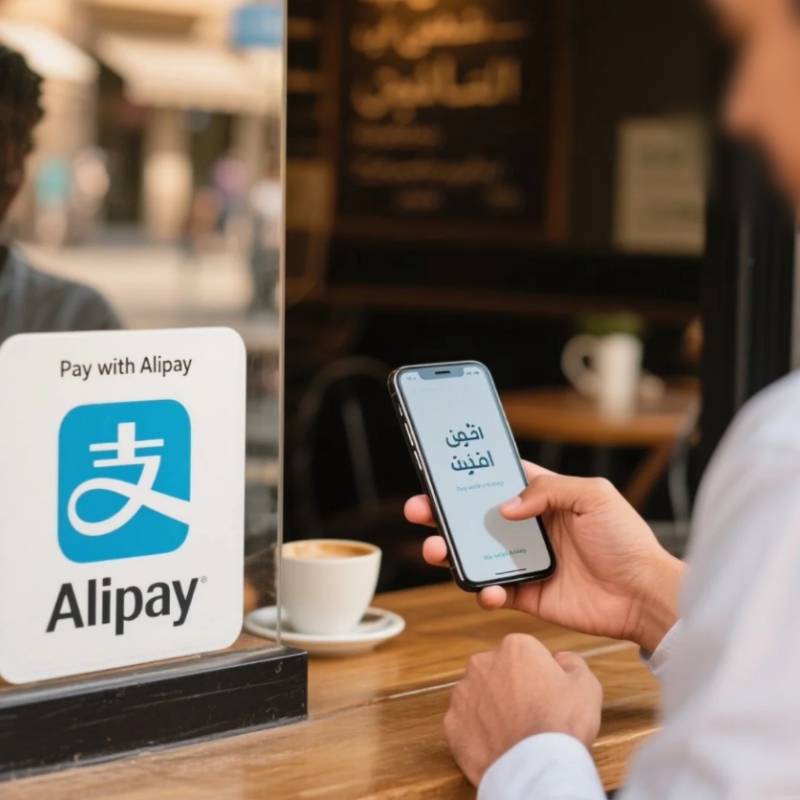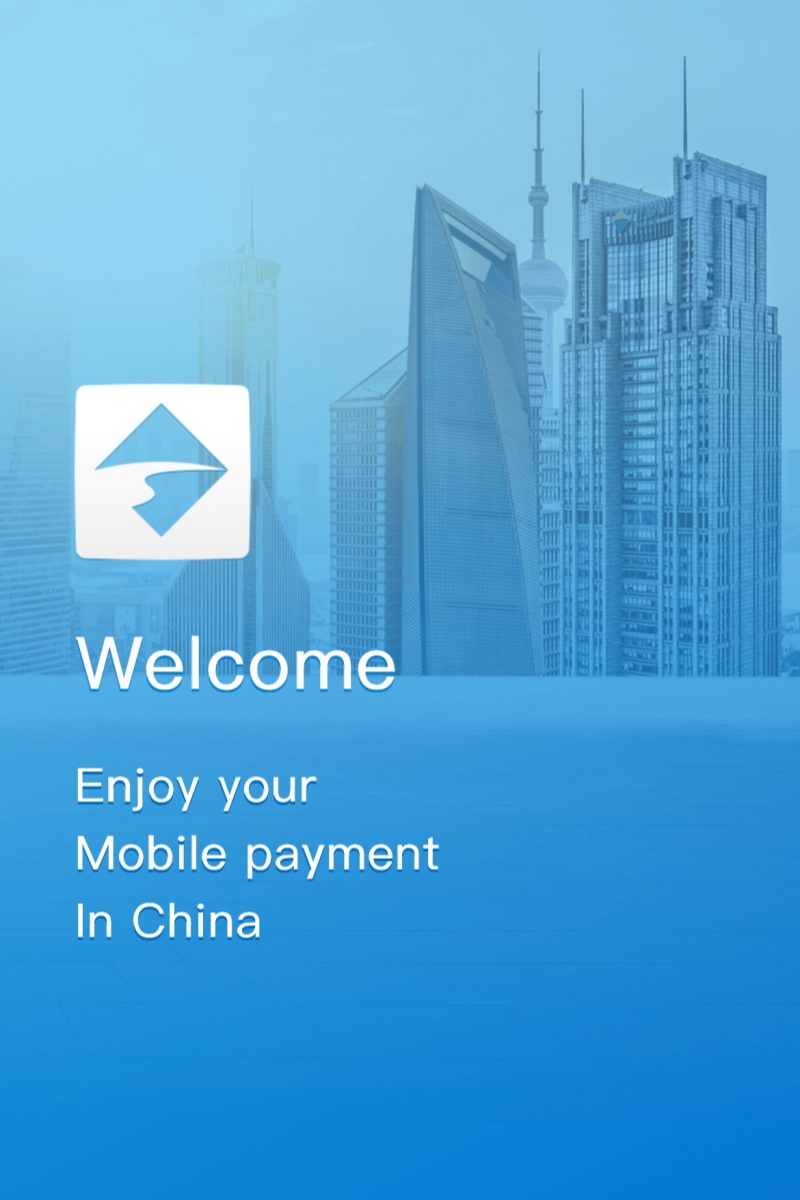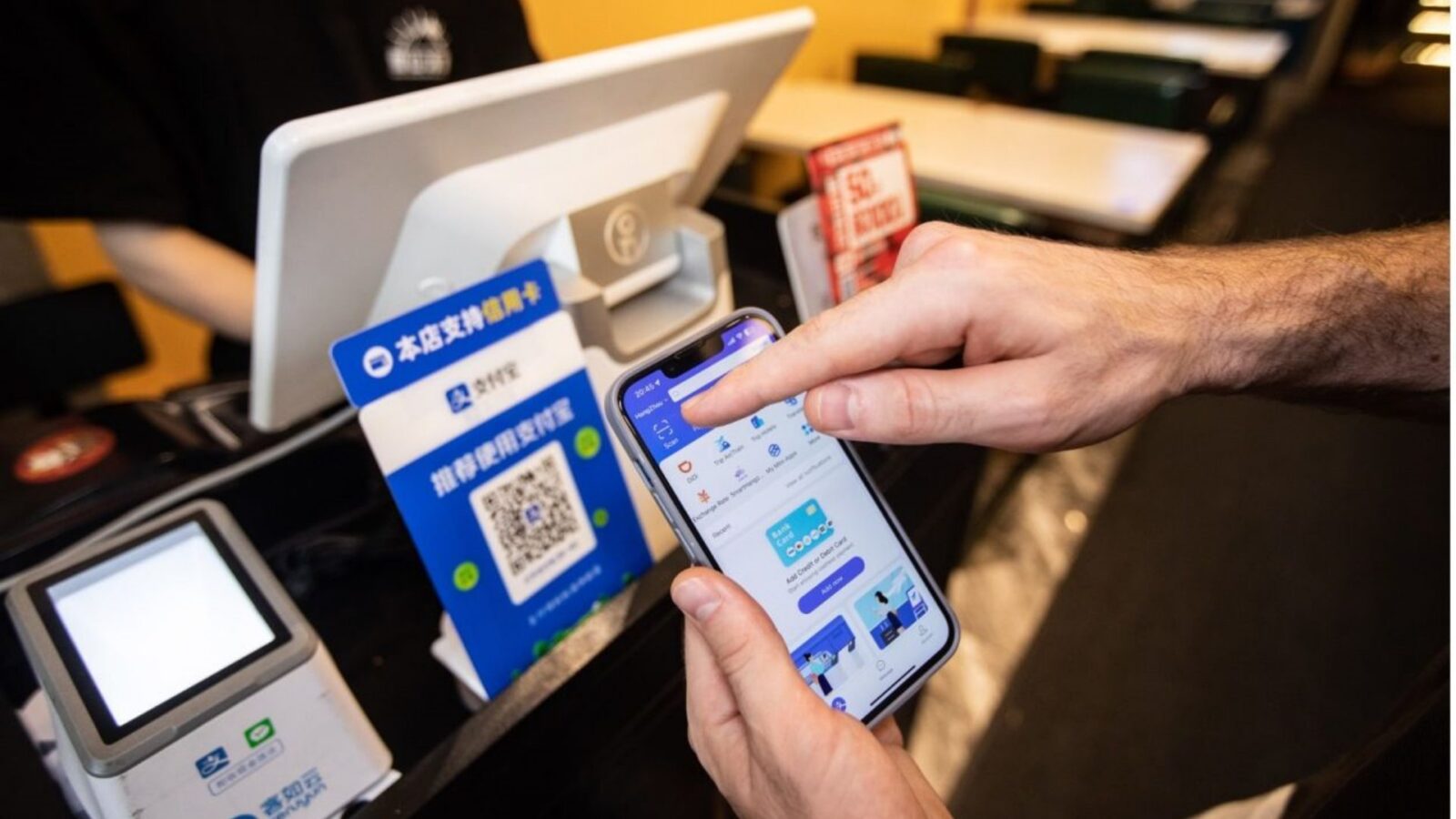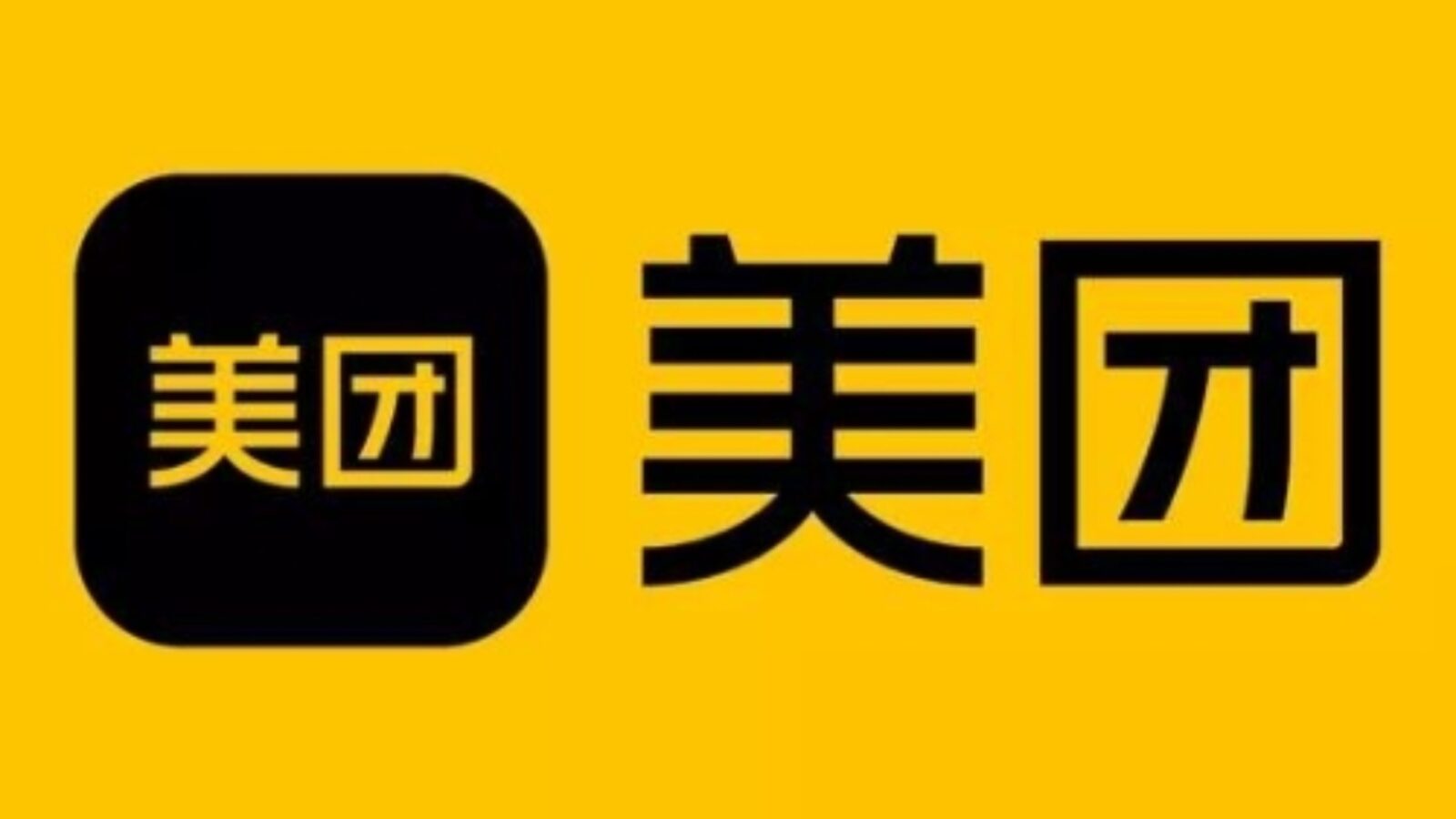Now that you know that China is a country in which everyone uses mobile payments, the Alipay Tour Card is visitor friendly payment tool that helps you to easily fit into this “no cash society”. It enables you to automatically pay by QR code from your phone, and you do not need a Chinese bank account. The Tour Card is an important settlement tool for travelers abroad, providing a simple way to make payments. With the Tour Card, you can link up your overseas bank to China’s huge web of businesses. You can use it with no stress for everything, the payment to a scanner code & I’m ready “for pay taxi or buy bus ticket” anything come back home souvenirs. Tour Card Making Cashless Exciting Now, you don’t have to travel cash.
Understanding the Tour Card: Function and Purpose

Alipay
Tour Card Introduction
The Alipay Tour Card is a feature inside the Alipay app designed to bring foreign visitors into China’s mobile payment system. Supported by the Bank of Shanghai, it functions as a prepaid virtual card created specifically for short-term overseas visitors. When you arrive and see locals paying with a quick scan, the Tour Card lets you do the same without needing a Chinese bank account.
The system is easy to activate and feels like carrying a temporary local bank account. Because funds sit in a prepaid balance rather than being pulled directly from your card, the Tour Card often works better at smaller shops where foreign cards might fail. This sense of reliability makes it attractive for newcomers.
Function Overview
The primary feature of the Tour Card is to work with QR code payments, so you can leave your cash at home and pay like a local in China. You scan a merchant’s static QR code, or show them your own dynamic payment code for them to scan back; either method results in the payment going through at once. It has a wide range of applications in the dining, convenience store, sightseeing spot, taxi and mall industries.
The Alipay Tour Card functions as a kind of prepaid virtual account. The process involves topping up an account — called a “balance” on the site — with money from an overseas credit or debit card, such as Visa, Mastercard or JCB. And They then withdraw all payments directly from this prepaid balance, not your foreign bank card. The benefit of this model is it minimizes the risk of rejection for payment at smaller merchants where direct binding of foreign cards may sometimes be less dependable.
Target users are oversea tourists and business travellers who don't have Chinese bank account. To sign up, you need a foreign passport and an overseas mobile number. The Tour Card has a 180 day period of validity. It doesn’t just solve the issue of rejection at some small vendors or in subway stations; you can also use it (on your phone) for certain online transactions. You can make reservations for a hotel, purchase train or air tickets and shop on services like Taobao directly within Alipay’s mini-programs, offering an all-in-one experience.
Other Payment Options
The easiest and most recommended method is adding an international credit or debit card (such as a card with Visa, Mastercard, or JCB) directly to your Alipay or WeChat Pay account. This will allow you to pay as a local would. The app takes your card at whatever the real-time exchange rate is getting converted to Danish kroner, charging you as if you were making a purchase — no need to preload cash.
Although China is predominantly a “cashless society,” it’s good to have some financial backup. You have options for converting foreign currency into Chinese Yuan (RMB) at an airport or bank, or using an ATM that takes your international card. Just know that most merchants will not have change for large bills, so it is best to carry a variety of denominations.
However, in some big places such as a hotel, big department store and international chain restaurant you can use your physical credit or debit card. But this process is far less common than mobile payments, because not many small to medium-sized businesses have card terminals. It should not be your sole means of paying.
Not sure which app makes paying in China easier for travelers? Check Alipay vs WeChat Pay for Foreigners: How to Quickly Pay in China in 2025
Using the Tour Card: Setup and Top-Up

Alipay Tour Card
Download and Switch to English
First, you will need to download the Alipay app from App Store or Google Play and change the language setting to English. Also take the international version if it asks to provide you english menus. The process is simple: search for “Alipay” in your app store, install the app and give basic permissions to access push notifications and your phone’s camera. Once opened, navigate to the settings icon and click “Language,” then switch it to English make everything easier. Register using an overseas mobile number - You do not need a Chinese mobile number and foreign phone numbers are allowed for Tour Card activation.
A few travellers report the app may show up in Chinese at first, but once you have changed it to English (or a language of your choice), it’s easy to get around. Screens of “Sign Up” or “Log In” will guide you linguistically in English, so you can avoid guessing at Mandarin text. This step makes sure that by the time you get to adding TourCard, you are familiar with every button and confirmation screen there.
Want to know how to set up Alipay as a foreigner in China? Read Alipay for Foreigners in China: Step-by-Step Setup Guide 2025
Activate the TourCard Mini‑Program
Search for “TourCard” and click to open the mini‑program in the app. During registration, you will be asked to register using your passport details — typically by scanning the photo page of your passport. You’ll also want to take the photo in good light, making sure the document’s edges are visible or else the system might reject it. After the scan is completed, the app asks you to verify personal information such as your full name, nationality, profession and address. The system will also walk you through a quick one-time face recognition process to verify your identity.
You’ll then return to an activation screen confirming: TourCard’s 180 day validity Maximum balance allowed Factorially - the gilet then fits. Verify the terms, accept the service fee, and click “Use Now” to activate. Now, the @TourCard1 pops up from your Alipay homepage as a mini‑app that you can call and check balance/top‑up at any time.
Top‑Up and Manage Funds
After successful verification, you can top-up your Alipay Tour Card with an overseas bank card (Visa, MasterCard, JCB, Diners Club and etc). The service prompts for the card number, expiry date and CVV code (shortly after requesting you a confirmation with your six‑digit payment password). Your money is immediately put on your TourCard from which you pay QR codes around China. Each reloading is limited to 100 RMB per transaction (up to a maximum of 2,000 RMB) with a slight fee charged by Bank of Shanghai that should be around 3 percent.
When the time is up, the card becomes inactive and any remaining balance is refunded to your original form of payment. There is also a top‑up limit of 10,000 RMB per card. If you reach the end of this limit, you can cancel the card and get a new one in order to refill again.
These rules makes the TourCard convenient for small transactions and short stays. Travellers who like to have smaller amounts left on their account are more adventurous and don’t mind wasting small amounts when the card expires. Frequent monitoring of your balance in the mini‑program helps you to be in charge of your budget and decreases the risk of being out of money on an unexpected basis while traveling.
Applying the Tour Card: Covering All Payment Scenarios

use Alipay
Public Transport
The Tour Card takes care of almost all your daily needs when moving around. You can glide through metro gates, hop on buses, and not grapple with paper tickets or try to make out vending machines in Chinese. For a traveler walking into a crowded station, opening the app and holding up the QR code at a turnstile is faster and less stressful. It feels almost the same as when locals travel and there’s no need to worry about jangling coins or queueing behind long lines at kiosks.
In major cities, such as Beijing, Shanghai or Guangzhou, the Tour Card can be directly used to take other forms of public transport. Buses, trams and even airport shuttles will increasingly owe you change in QR, so having the Tour Card on hand means you never get caught without it. Plenty of visitors say one of the best practical arguements for getting the card is simply being able to breeze through the barriers alongside locals.
Dining and Shopping
In restaurants, be they a street barbecue stall in Chengdu or a coffee shop in Shanghai, the QR payment option operates seamlessly. Instead of digging around for bills, you simply scan or display your code and — voilà! — it’s done. It is also widely accepted at popular sites such as the Forbidden City or Shanghai Disneyland, making it easy to buy tickets with no language barrier. As for online shopping, links with cards such as Taobao or Tmall store are directly established with the Tour Card so that souvenirs can be easily purchased and delivered without complicated payment process.
Tour Card's reach includes everything from high-end to more affordable spots. Whether it is a visit to a boutique coffee house or buying street food in night markets, payments are quicker and more secure with the use of QR codes. For travelers, this translates into a decrease in worry over whether a shop will accept your foreign card and more freedom to sample local snacks, pop into convenience stores or purchase tickets on the fly.
How Payments Work
The process is always the same: you scan the merchant’s code, or they scan yours. The correct amount is automatically deducted from your Tour Card balance by the app and you’ll be shown a confirmation screen in seconds. This routine soon feels as automatic as swiping a metro card back home.
Once you get the flow, the gesture is actually easy. Restaurants, taxis and souvenir stands all operate via the same quick method, and having a consistent way to pay makes things less confusing. For many travelers, a few days of using the Alipay QR code feels as natural as reaching for their wallet but is faster and sometimes more reliable.
Special Note: Tour Pass vs Tour Card
In recent years Alipay has rolled out two separate solutions for foreign travelers: the older Tour Pass and newer Tour Card. Despite their similar names, the two products are totally different.
Tour Pass was in effect a temporary prepaid bank card issued in cooperation with the Bank of Shanghai. Visitors had to put money into this prepaid account, which was available only for 90 days. The refund worked through the bank and was usually unwieldy, if not downright slow or cumbersome, to get once expired only anything credit line had to be settled. It was a stopgap product, but with so many limitations and little promotion in the heartland.
However, the Tour Card is a more advanced and permanent measure. It operates as an in‑app virtual wallet which is directly integrated to the Alipay application and it has a validity of 180 days from the date of loading, with top‑up payments accessible using overseas bank cards. It also lays claim to less stipulations and more acceptance, meaning it’s a lot more of-use when you’re out in the world than the Tour Pass.
Making the Most of the Tour Card: Practical Tips
Security and Refunds
Refund Policy: Refund amount will be returned to the Tour Card balance, not directly to your linked overseas bank card.
Balance Restrictions: Tour Card balance may not be transferred; the subject can only be used in Alipay.
Security Protection:We suggest you to set payment password, SMS and Email alerts for avoiding wrong operations or illegal transactions.
Common Issues and Solutions
Insufficient Balance :Tour Card does not support overdraft, please ensure your balance is enough before shopping.
Merchant Restrictions: A few old clubs with QR code machines and remote stores, etc., do not support Tour Card. Keep some cash or a second overseas card on hand.
Validity & Policy Updates The short term expiration does not apply to the Tour Card itself, but is from a change of Alipay's policies. Be sure to check back for the latest terms before you travel.
Device and Network Requirements
Operating System: Works with most smart devices: Requires iOS (typically 12 or higher) or Android (typically 6.0 or higher). You’ll want a device from the past 3 to 4 years as older devices might run into issues with app installation or lag.
Network Requirements: Requires the connection: you will need always on-line (4g/5g, wi-fi) access to pay with the Tour Card as virtual wallet.
Network in China: Most international roaming SIMs or eSIMs will work out of the box, though you might want to buy a local data plan for consistent access. Public Wi-Fi connections are not always stable, so don’t rely on mall or restaurant internet for making the payment.
FAQ — Foreign Travelers’ Common Questions
Q: Do I need a Chinese phone number to use the Alipay Tour Card?
Most travelers can simply use their foreign number when registering the app, and the basic payment functions will work fine. Some advanced services, like ride-hailing mini-programs, might ask for a local SIM. but the Tour Card itself is designed to let foreigners manage without one. If you’re visiting for a short stay, there’s no real need to worry, as payments will still go through. Travelers often share stories of using the app smoothly with European or US numbers, so the process is tested in practice.
Q: What should I do if my payment fails?
It sometimes happens that a payment won’t go through — maybe the metro gate is crowded or the café has poor Wi‑Fi. First check your network connection and Tour Card balance, since a weak signal often causes errors. If that doesn’t help, switch to another Wi‑Fi spot or mobile data, and in the worst case, try paying again with your backup card. Some travelers also recommend keeping screenshots of payment confirmations to show staff if something looks stuck.
Q: Is the Alipay Tour Card safe for foreigners?
Security is strong. The system encrypts transactions, and you’ll set a six‑digit password. Adding fingerprint or face ID makes it safer, which is worth doing in case you misplace your phone on a busy train. Alipay has strict monitoring, and suspicious activity is usually flagged quickly. That said, always download the app from official stores and avoid using public Wi‑Fi for payments to keep risks minimal.
Q: Can I get a refund from my Tour Card?
No, refunds are not available for unused funds. Because of this, many tourists recommend topping up small amounts at a time, maybe 1,000 RMB. so you won’t lose cash if your trip ends sooner than expected. The balance disappears after the 180‑day period, so careful planning matters. Think of the Tour Card as a travel wallet: load what you need, use it freely, and avoid overfunding.
Q: Where can I actually use it?
The Tour Card is widely accepted: you can tap through metro gates, pay for buses, order street food, or buy attraction tickets. Even major online stores like Taobao work with it, as long as you stick to merchant payments. Travelers often say it feels identical to how locals pay — scanning QR codes quickly at night markets or convenience stores — so you don’t feel left out in a cashless crowd.
Q: What is the spending limit?
Each Tour Card allows up to 10,000 RMB within 180 days. Once the card expires, you’ll need to activate a new one, so plan your budget accordingly if your trip is longer. This limit suits most short‑term travelers, covering meals, transport, and entrance fees comfortably. For longer stays, consider combining Tour Card with direct card binding to avoid interruptions.
Q: Can I send money to friends with my Tour Card?
No, it doesn’t allow personal transfers or red packets. It is designed only for merchant payments, so you can’t split bills directly with friends. If you need to share costs, some travelers suggest one person pays with Alipay and others reimburse in cash or via Wise transfers. It’s less flexible than a local wallet, but manageable with planning.
Q: Should I still carry cash or another payment option?
Yes, having some spare cash and WeChat Pay helps a lot. Not all small stalls accept Alipay, and in remote towns, paper notes are still the safe fallback option. Carrying around 500 RMB in small bills is usually enough for emergencies, like paying in rural taxis or buying snacks at countryside stops. A second app like WeChat also covers you if one platform has technical issues, keeping your trip stress‑free.


